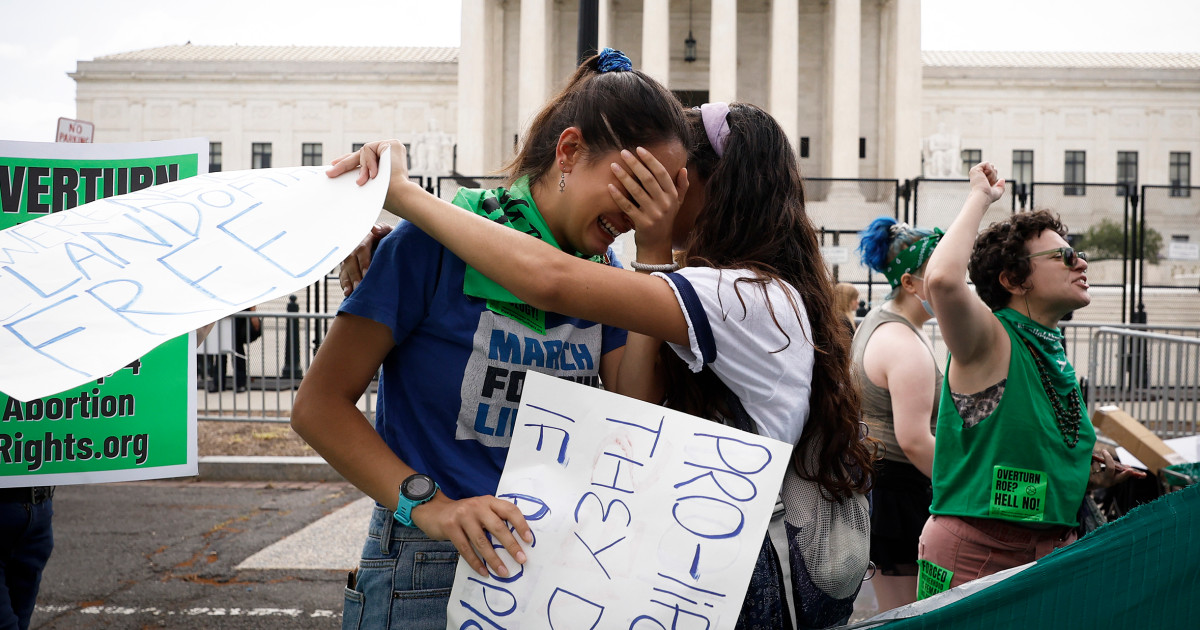New research released Wednesday adds to a growing body of evidence showing a link between more restrictive abortion policies and higher rates of maternal and infant mortality.
The analysis comes from the Commonwealth Fund, an independent research organization focused on health policy. It found that strict restrictions on abortion are associated with poorer access to health care for pregnant people and infants, which in turn raises the risk of negative outcomes such as mental health challenges and death.
According to the report, states that heavily restricted abortion access in 2020 had maternal death rates that were 62% higher than they were in states where abortion was more easily accessible.
The disparity may be aggravated by state-level changes after the Supreme Court overturned Roe v. Wade in June, the report says.
People of color, those who are uninsured and those who live on low incomes or in underserved areas already face additional risks that threaten their lives during pregnancy, such as difficulty accessing consistent pre- and post-natal care, said Dr. Laurie Zephyrin, the senior vice president for advancing health equity at the Commonwealth Fund.
“Then, on top of all that, you’re adding this variation in abortion services, reproductive health services, by states,” Zephyrin said. “We’re just adding on to an already fractured system.”
For the new analysis, Zephyrin and her co-authors used data from the Centers of Disease Control and Prevention, as well as an index quantifying levels of abortion access from the Guttmacher Institute, an abortion rights research and advocacy group.
Their report isn’t the only one that has documented a correlation between abortion restrictions and higher maternal and infant mortality. Last year, a study from researchers at Tulane University similarly showed that the higher a state scored on a ranking of abortion restrictiveness, the higher its total maternal mortality was from 2015 to 2018.
“It’s important to keep the issue in the forefront, because then that continues to bring it to awareness for everyday people so that people that are suffering from these inequities are not suffering in the shadows,” Zephyrin said. “And hopefully, it’ll help drive policy change.”
Zephyrin’s report reveals a correlation, not a direct causal link, and other policies in states with high maternal mortality most likely play roles in the disparity, as well. For example, some states that restrict the ability to terminate pregnancies also have more limits on Medicaid coverage and fewer OB-GYNs and nurse midwives per capita.
The Commonwealth Fund analysis found that an estimated 39% of counties in the states categorized as having the most restrictive abortion rules are considered “maternity care deserts.”
Medicaid, meanwhile, accounts for about 44% of payments for birth-related services in states where abortion access is restricted, according to the report. Medicaid coverage has traditionally ended 60 days after delivery, but since 2020, some states have extended it to 12 months.
A majority of maternal deaths happen within the first year of having given birth, according to a CDC study published in September. The researchers estimated that 80% of pregnancy-related deaths are preventable.
The Commonwealth Fund report notes that “the general pattern of differences” in health outcomes between states with more and fewer abortion restrictions “has remained consistent” over time.
But since the Supreme Court overturned Roe v. Wade, those existing challenges could get worse, some experts say, because some doctors may now be reluctant to work in states they perceive as restricting their abilities to do their jobs.
“I think the bottom line is that you take space with these existing deficits, right? And then you have these further restrictions on reproductive health care,” Zephyrin said. “You know, there’s the potential of even further disrupting the health care system.”
Share your story or advertise with us: Whatsapp: +2347068606071 Email: info@newspotng.com













